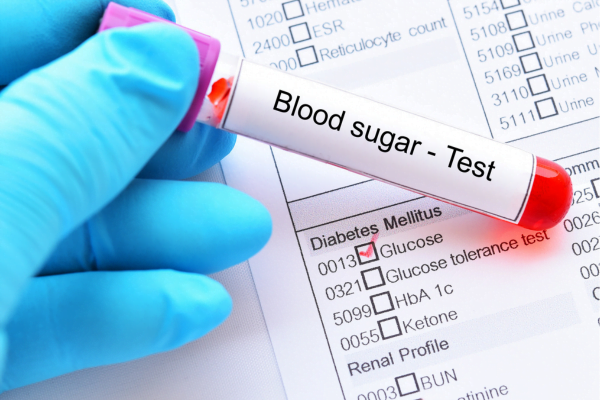Many adults sit between normal blood sugar and diabetes without knowing it. Clinicians call this impaired glucose tolerance, and it signals higher cardiometabolic risk. Understanding what it means, how it is diagnosed, and what to do next can help you act early and confidently.
Key Takeaways
- Definition and risk: IGT signals higher risk for type 2 diabetes.
- Testing matters: OGTT, fasting glucose, and HbA1c define the category.
- Action works: Weight, diet, sleep, and activity meaningfully lower risk.
- Monitoring: Periodic labs and home checks guide progress and safety.
What Is Impaired Glucose Tolerance?
Clinicians use impaired glucose tolerance (IGT) when blood glucose rises higher than normal after a measured glucose load but remains below diabetes thresholds. It reflects reduced insulin sensitivity and a slower return of glucose to baseline. In plain terms, your body is clearing sugar more slowly than it should.
IGT belongs to the broader spectrum of dysglycemia, often grouped with fasting abnormalities and elevated HbA1c. People with IGT face higher risks of progressing to type 2 diabetes and cardiovascular disease. Early identification allows targeted lifestyle changes and, if appropriate, adjunctive medication to reduce risk.
How IGT Progresses to Type 2 Diabetes
Progression usually follows a path: insulin resistance increases, pancreatic beta cells compensate with higher insulin output, and over time beta-cell function declines. Post-meal glucose rises first, then fasting glucose elevates as hepatic glucose output increases. This staged pattern explains why some tests flag risk before others.
Clinically, teams often compare glucose intolerance vs insulin resistance when explaining mechanisms. Insulin resistance is the driver; glucose intolerance is the result seen on tests. Addressing weight, visceral fat, sleep debt, inactivity, and certain medications can improve sensitivity and reduce progression risk. For a deeper overview of the biology of sensitivity testing, see the resource Diagnosing Insulin Resistance for test options and context.
Diagnosing Insulin Resistance provides complementary testing details to interpret clinical patterns.
Diagnosing IGT: Tests and Ranges
Diagnosis relies on standardized laboratory tests. The oral glucose tolerance test (OGTT) measures a fasting sample, then a 2‑hour sample after a measured glucose drink. A 2‑hour value in the intermediate range indicates post‑challenge dysglycemia. Fasting plasma glucose and HbA1c provide additional context and help rule in or out diabetes.
Laboratories may list target bands differently, but core thresholds follow expert consensus. The pre diabetic range hba1c sits below the diabetes cut‑off and above normal, identifying increased risk. Your clinician may repeat abnormal tests on a different day to confirm stability and exclude short‑term effects like illness or medications.
For step‑by‑step testing details and preparation tips, see the Oral Glucose Tolerance Test guide, which explains sampling times and interpretation. To compare fasting criteria and sampling windows, the Fasting Plasma Glucose Test overview outlines collection requirements and caveats.
For formal diagnostic thresholds used in practice, review the ADA diagnostic criteria, which summarize recommended cutoffs and confirmation steps.
IGT vs IFG: What the Numbers Mean
Post‑challenge abnormalities (IGT) and fasting abnormalities (often called IFG) describe different physiologic problems. IGT reflects limited insulin action after meals and slower glucose disposal. Fasting abnormalities reflect higher baseline hepatic glucose production and reduced overnight insulin effect. Some people have both patterns, which often signals broader insulin resistance and higher risk. Clinically, the pattern helps tailor monitoring: if fasting is normal but post‑meal spikes are high, clinicians may emphasize meal composition, meal timing, and post‑meal activity. If fasting is elevated, weight loss, evening nutrition, and sleep hygiene often receive more focus. In either case, the combined pattern informs follow‑up intervals and preventive strategies.
Symptoms and Early Signals
Most people with IGT feel fine, which makes structured screening important. When symptoms occur, they tend to be subtle and nonspecific. Common prediabetes symptoms include increased thirst, frequent urination, fatigue, and blurry vision, especially after large, high‑carb meals.
Consider personal risk factors when deciding on testing intervals. Family history, higher body weight, sedentary patterns, polycystic ovary syndrome, sleep apnea, hypertension, and dyslipidemia increase risk. For a plain‑language overview of warning signs and prevention basics, see Prediabetes Symptoms And Prevention, and compare with Early Signs of Type 2 Diabetes for progression clues.
Women and Pregnancy Considerations
Clinicians sometimes identify impaired glucose tolerance in pregnancy during routine prenatal screening. Pregnancy hormones increase insulin resistance, and a standardized glucose challenge helps detect abnormal responses. Identifying and managing these findings helps protect both maternal and fetal health.
Protocols vary by country, and timing depends on prior risk and earlier test results. Your care team may repeat testing later in pregnancy if borderline values appear early. For background on testing workflows and why fasting matters before sampling, the Fasting Plasma Glucose Test article explains collection details used alongside prenatal protocols.
Note: Management plans in pregnancy follow obstetric guidance. Discuss specific targets, home monitoring, and nutrition with your prenatal clinician.
Lifestyle Interventions and Targets
Comprehensive lifestyle changes remain first‑line for IGT. Weight reduction, daily movement, resistance training, and consistent sleep improve insulin sensitivity. Diet quality, fiber intake, protein spacing, and lower refined carbohydrate loads can reduce post‑meal spikes and cardiometabolic risk markers.
When planning meals, people often ask about foods to reverse prediabetes. In practice, aim for minimally processed foods, plenty of vegetables, legumes, whole grains in measured portions, lean proteins, and unsweetened beverages. Limiting sugar‑sweetened drinks, large late‑evening meals, and highly refined snacks can help flatten post‑meal excursions.
Structured resources can speed decision‑making and reduce trial‑and‑error. For practical meal strategies and shopping ideas, see Diet for Prediabetes for menu patterns and substitutions. For prevention‑focused habits beyond diet, the Type 2 Diabetes Prevention guide highlights activity targets and weight‑maintenance tactics.
Public health guidance emphasizes early action, regular testing, and sustainable changes. For population‑level context on risk and prevention programs, review CDC guidance on prediabetes, which outlines screening criteria and lifestyle program benefits.
Medications and Monitoring
Your clinician may discuss adjunctive options when lifestyle efforts are insufficient, risk is high, or other conditions coexist. In those situations, impaired fasting glucose treatment discussions may include off‑label use of insulin sensitizers or other agents based on guidelines and individual risk. Medication decisions should weigh benefits, side effects, nutrient interactions, and monitoring burden.
For an overview of common options and mechanisms, see Common Diabetes Medications for mechanism summaries and class differences. When metformin is considered, Metformin in Prediabetes explains its preventive role and B12 considerations. Combination therapies are sometimes used for diabetes; you can review class examples such as Dapagliflozin or Invokamet to understand mechanisms your clinician might discuss if progression occurs.
Monitoring helps translate changes into data. Periodic laboratory testing confirms trends and safety. Home monitoring can capture post‑meal spikes, especially after new foods or meal timing experiments. For meters suited to quick spot‑checks, see the OneTouch Verio Flex Meter for sample requirements and display features.
Tip: Pair brief, 10–15 minute post‑meal walks with occasional home checks to evaluate meal timing and composition.
How Long Might Reversal Take?
People often ask how long does it take to reverse prediabetes. The answer varies by baseline weight, genetics, medications, sleep, diet quality, activity, and consistency. Some markers change within weeks, while HbA1c reflects roughly three months of glucose exposure. Clinicians generally reassess at regular intervals, then adjust plans when plateaus occur.
It helps to define concrete, modifiable targets. Aim for gradual weight loss if indicated, resistance training two to three times weekly, daily movement, and balanced meals. If you want a structured approach, use the Type 2 Diabetes Prevention checklist for habit sequencing and relapse planning.
Recap
IGT marks a higher‑risk state that benefits from early, sustained action. Testing clarifies the pattern, and lifestyle changes carry the largest effect. Adjunctive medications and monitoring may support specific goals. Work with your clinical team to confirm thresholds, personalize targets, and track progress over time.
This content is for informational purposes only and is not a substitute for professional medical advice.



